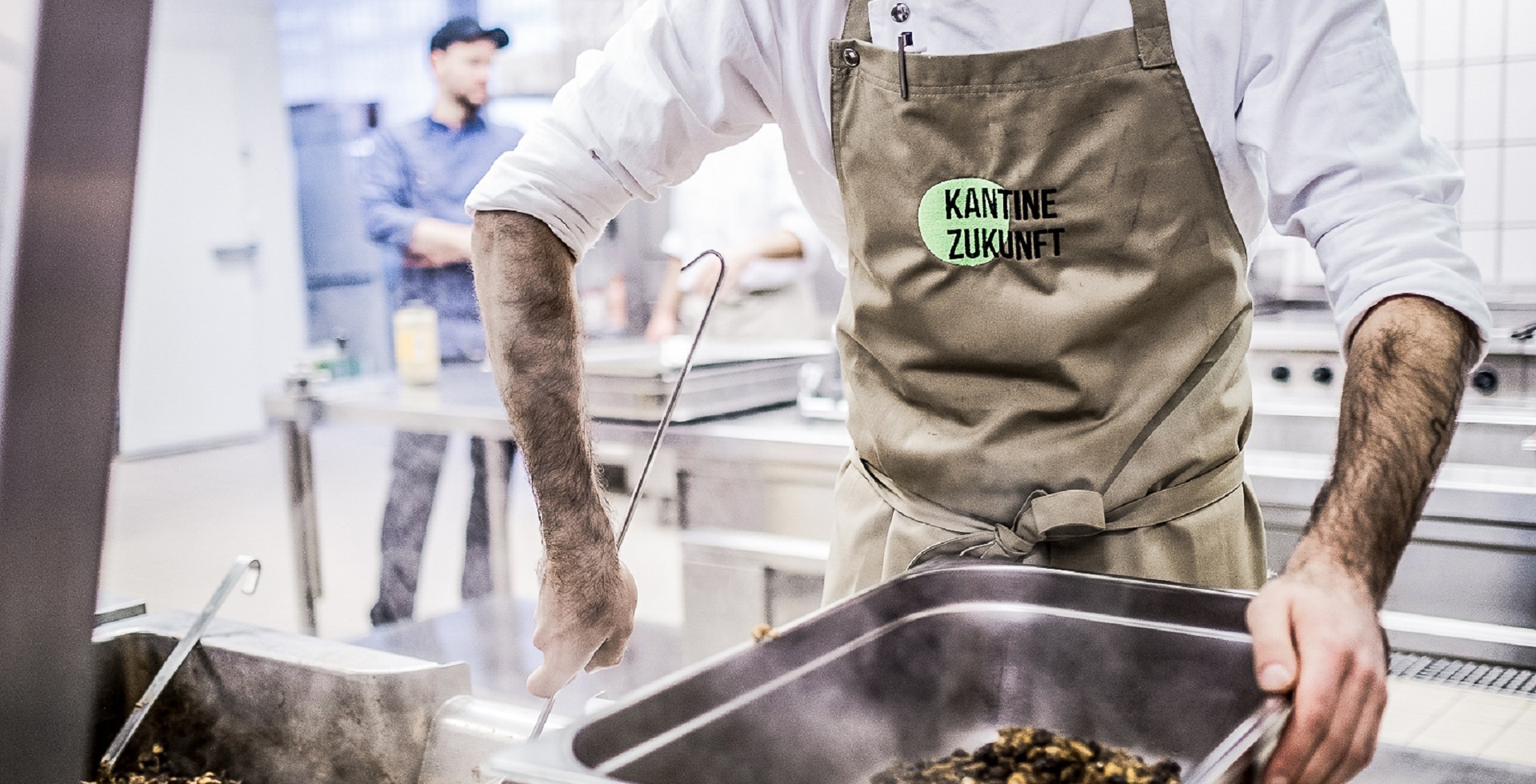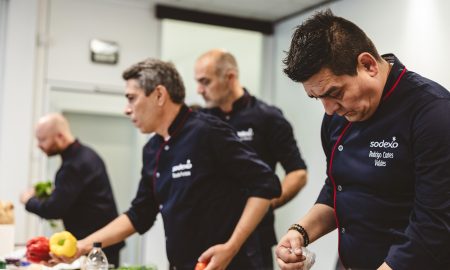Let’s call it that “ugh” moment. It might be the sight of the gloopy lentil stew plopping bleakly onto a paper plate. Or perhaps that of an uninspired goulash, which appears to be made only of fatty, stringy tendons. And then there’s pizza day, with its sad canned corn and salami toppings. One thing’s for sure: We’ve all experienced these moments of cafeteria disgust. That moment when you would rather turn around and return to staring at your computer screen. But you stick around, and tough it out. Hunger takes over in the end.
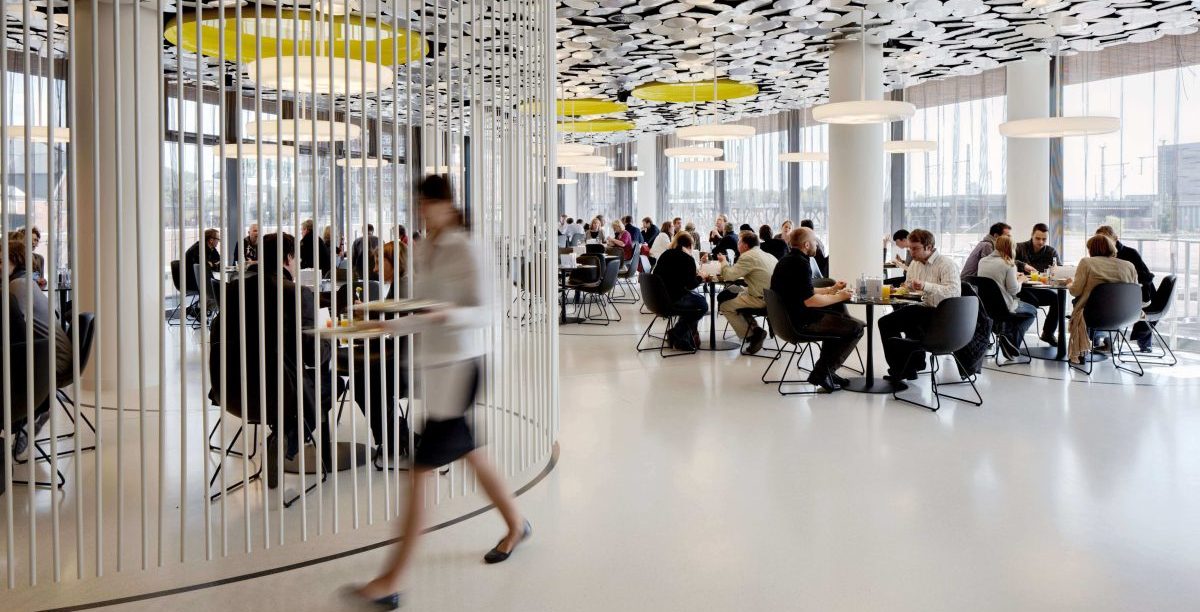
Image: AdobeStock | Tatiana Atamaniuk
To this day, it’s stories like these that people think of when company canteens come to mind. Particularly if you had the questionable pleasure of eating at the company canteen in the days before the Corona pandemic. Sure, when it comes to company canteens, some hopeless culinary cases are still around today. However, they are less common than before. After all, in these days of home offices, increasingly fewer companies can afford to serve questionable food to employees. And what’s more: Today, a good cafeteria can even be a decisive reason for attracting good employees to the company – and retaining them. That’s why cafeterias are often now called “company restaurants”, a name which has a somewhat more sophisticated ring to it. But what exactly is a good company restaurant? Where are the best ones, and where is the trend headed?
Patrick Wodni: From Michelin-starred chef to canteen consultant
“It might sound obvious, but what makes a good company restaurant is simply good food,” says Patrick Wodni. The 34-year-old can confidently be described as the most famous canteen chef in Europe. He has worked for years in some of Germany’s most prestigious restaurants, most recently in Berlin’s Michelin-starred restaurant Nobelhart & Schmutzig. That is, until he decided to turn his back on Michelin-starred gastronomy – and start cooking where he could “really make a difference”, as he puts it. Wodni initially did this as a chef in a northern German hospital. In fact, he cooked so well there that the New York Times reported extensively on his career and cuisine in a long article.
Sieh dir diesen Beitrag auf Instagram an
Today, the native of Giessen is leading the project called “Kantine der Zukunft” in Berlin. He also helps companies, preschools, hospitals and senior citizens’ homes to improve their food offerings.
In this case, better means increasing the amount of organic food used, creating balanced menus that don’t include meat five times a week, and, needless to say, working with the kitchen staff to create recipes that taste good. However, what Wodni describes as “delicious” goes far beyond the merely gustatory.
Beyond curry sausage and spaghetti bolognese
The question of what make a good company restaurant in 2023 cannot be answered without mentioning the so-called Copenhagen model. “Copenhagen still serves as a role model today,” says Wodni. “It’s been 17 years since they started focusing on organic ingredients used in public foodservice there. This political decision mandated that all city-run kitchens had to gradually increase the share of organic ingredients of their meals.”
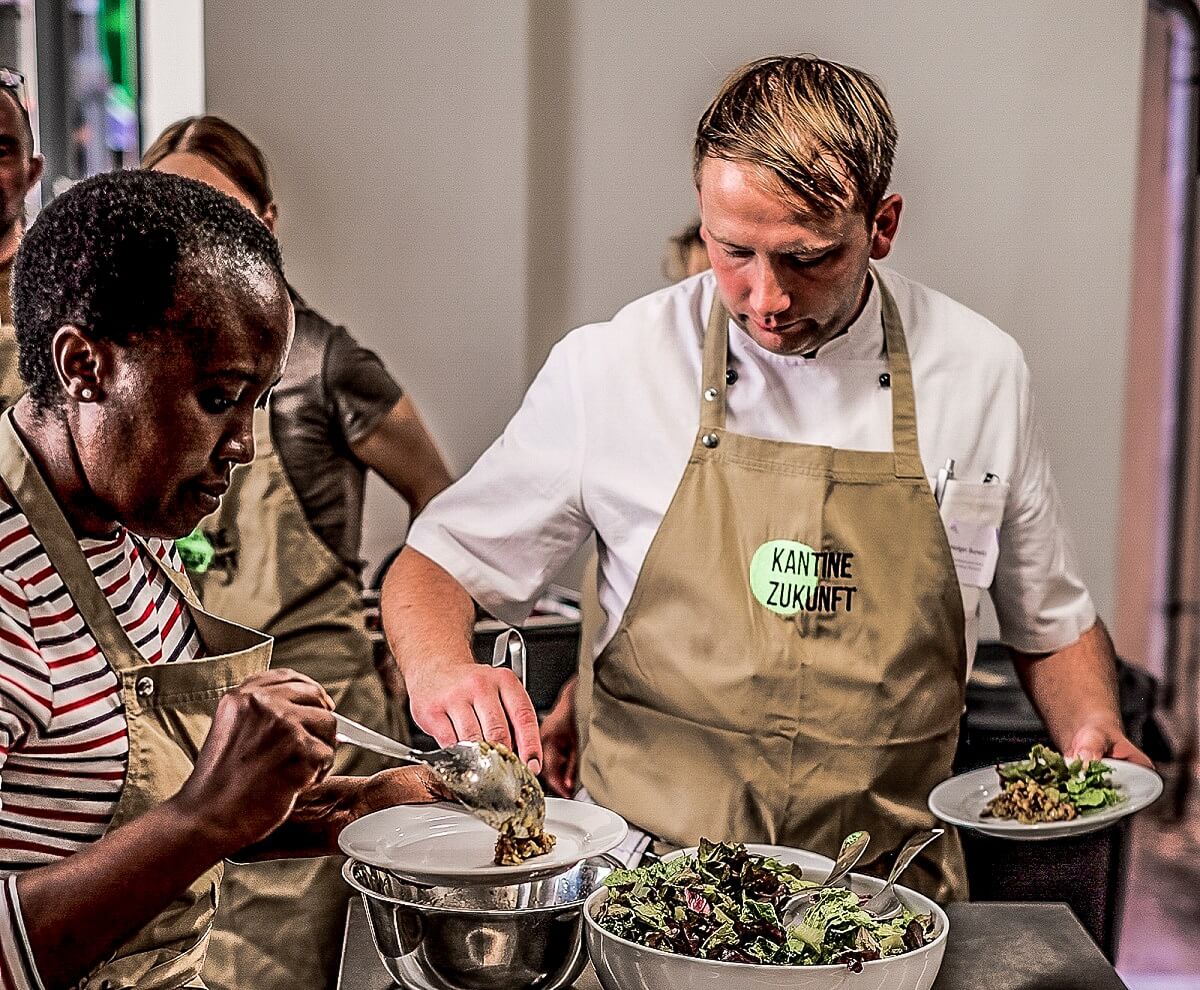
Image: Etienne Degeest
Ok, you might mention, this still only applied to state-run daycare centers, schools or hospitals. However, this decision also put pressure on the private sector. As Wodni puts it, “If, as a successful law firm, I can’t even meet the standard a retirement home has achieved, then I’m pretty stupid.”
The Copenhagen model also demonstrates it’s no longer just about organic. Instead, using organic foods leads to other quality attributes that also make a company restaurant so promising today. This includes using regional foods – incidentally one of the 2024 food trends – and creating new, innovative dishes beyond curry sausage and spaghetti bolognese. By doing so, you create a place that offers more than just the cheapest possible calorie intake.
The company restaurant of the future is all about food
This is precisely what a company restaurant can no longer be today. The large tech companies in Silicon Valley became aware of this fact a few years ago. To this day, Facebook, Twitter, Dropbox and co. still offer company restaurants that are regularly praised by the international press as the best in the world. No wonder. In addition to organic meals, which are usually free of charge for employees at any time of day, often in the form of vegan dishes, their company restaurants score highly with their stylish interior and relaxed, charming service. And there are many imitators: Corporations around the world have now understood that, in times of cross-industry skilled worker shortages, a good company restaurant can be a fundamental advantage when it comes to attracting employees.
Sieh dir diesen Beitrag auf Instagram an
However, since the pandemic-driven trend toward home offices, things are changing in this regard as well. Much more than before the pandemic, a good company restaurant today is about food, rather than the atmosphere many tech companies in California have perfected. In the best case scenario, employees would also drink their after-work beer at the company restaurant to continue brainstorming about the latest project. In the post-pandemic era of New Work however, where the office is no longer the center of employees’ lives, such places are no longer the recipe for success they once were.
Company restaurants as pioneers of sustainable gastronomy
Instead, the values – and also the success – of a company restaurant are communicated through the food. This is shown by the annual ranking of the independent Food & Health initiative, which has awarded the best company restaurants in Germany since 2018. The judging criteria include three aspects: responsibility, health and enjoyment.
In 2023, construction company Josef Rädlinger in Cham, IT company Vector Informatik in Regensburg and insurance giant Allianz Trade in Hamburg ranked among the winners in the under 400 meals per day category. In the over 400 meals per day category, it was the investment bank Union Investment in Frankfurt, the Vector IT site in Stuttgart and the high-tech milling machine manufacturer Deckel-Maho in Pfronten, Bairy.
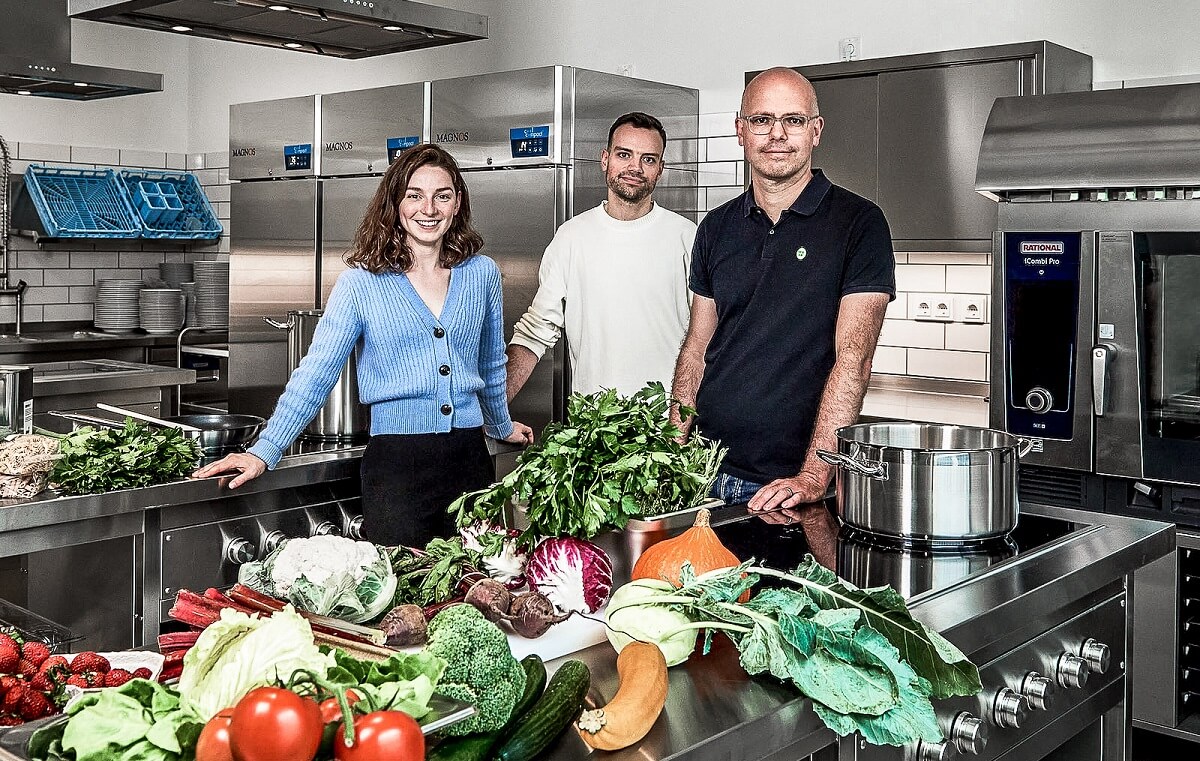
Image: Saskia Uppenkamp
It goes without saying that, in terms of taste, the kitchens of these company restaurants meet every need. However, taste means more here, as Theresa Geisel, chairwoman of the initiative, made clear when the rankings were announced. “More transparency in product origins, more organic food, greater relevance of animal welfare by using less but higher quality meat, and an expansion of the range of climate-friendly dishes and packaging. Time and again, we judges are impressed by the creativity with which company restaurants make sustainability a tangible experience and entice people to eat better with gusto.”
This trend towards more sustainability and good food is also noticeable in the US, as Kim Severson reports in her article in the New York Times. Food remains a central part of an office day and also poses a challenge for US companies to provide good to very good food to their employees despite fluctuating numbers of workers in offices and rising food and operating costs. For this reason, companies there are increasingly relying on subsidies for food delivery services such as Relish by ezCater or hybrid concepts such as The Anecdote. This novel concept is actually a kind of company café where companies can offer their employees subsidized or free food, but has more the look and feel of a restaurant. What else makes it unique? It’s also open to the public.
Sieh dir diesen Beitrag auf Instagram an
It is precisely this creativity and diversity taking root in corporate catering that seems to be paying off more than ever in the hybrid world of New Work. “What we’re seeing now is that employees are planning their home office days based on the menu,” says Patrick Wodni. This shows that what constitutes a good company restaurant or good company catering changes over time. But now more than ever, it’s all about good food that also meets modern sustainability criteria. This is good news in these times of crisis. At least for those who don’t like stringy goulash. Or gloopy lentil stews. Or pizzas with – ok, I think you get the drift.


